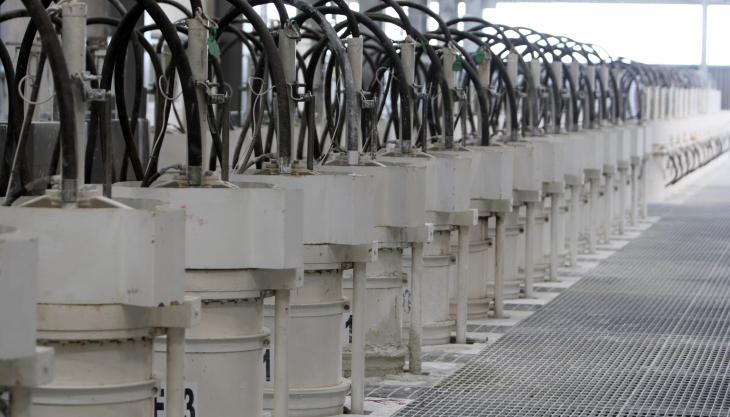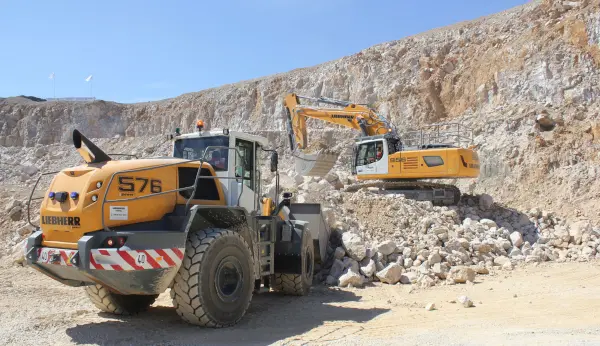Imerys’ Clay Country Vision

In 2006 Imerys announced a major restructuring of their UK business associated with the supply of china clay into the paper market. This resulted in a consolidation of the company’s production platform in mid-Cornwall to ensure a sustainable future. As well as significant implications for the workforce, this has had an effect on Imerys’ land requirements in the area. As a result of the changes, in excess of 700ha of land have become surplus to operational requirements and this forms the basis of the Imerys regeneration strategy.
The company’s vision is to create a positive legacy from the restructuring in order to promote the mid-Cornwall china clay area as a national centre of innovation in sustainable living, working, education, tourism and recreation. The strategy has a number of core strands, including sustainable development initiatives and transport improvements, but the most important goal is to provide an environment for job-led growth.
Recognizing the need to maximize co-operation and collaboration in delivering the strategy, it is being progressed in consultation with the South-West Regional Development Authority, Restormel Borough Council and Cornwall County Council. Other key stakeholders within the local community are also taking part in the process.
One particular aspect of the regeneration strategy is the potential link to the Government’s Eco-Town initiative. Imerys’ plans, which have a number of synergies with this concept, were recently accepted into the final round for approval, along with 14 other sites across the country.
Heralded as a ‘once in a lifetime opportunity to make a difference’, Imerys’ ambitious plans for restoration and building in the traditional heartlands of china clay mining aim to create a balance between a rich and diverse environment, a vibrant and inclusive society and a productive economy that allows current and future generations to enjoy a better quality of life.
The visionary plan puts the community first with a focus on job creation, housing, renewable energy and leisure activities. There is also a strong commitment to rebuild a lost Cornish landscape, including plenty of green space, while retaining some of the distinctive mining heritage features.
The scope of the vision is dramatic, with plans for 5,000 energy-efficient new homes to be built across six dispersed sites. Many of these will be designed as affordable houses to meet local needs. They are also intended to meet the sustainability criteria identified by the Government in developing Eco-Town communities in the country.
Job creation is a vital element of the vision with over 37ha of employment land being made available. The emerging environmental technology sector and other cutting-edge green businesses are envisaged as generating dynamic new job opportunities within central Cornwall. In addition, the development of renewable energy initiatives in the area is anticipated to have business benefits, as well as meeting the challenge of climate change.
Linking the six identified regeneration sites, which stretch over 700ha between Nanpean and Par, will be new sustainable transport links to encourage energy-efficient travel. These will include improved rail and road links, as well as new walk and cycleways to connect homes and employment spaces, linking villages for convenience and extending the network already created by Imerys.
Restoring the landscape and leaving a positive legacy for future generations will also include creating extensive new open space opportunities for public access and leisure. The total scope of the vision will see two thirds of the land available being restored and retained as open countryside, with only a third being built upon.
Innovative uses of surplus land across the sites will include the provision of new lakes and space for extreme sports activities. The vision for a new marina at the port of Par has already generated international interest and could introduce many marine-related businesses and leisure opportunities to the area. It is anticipated that the regeneration strategy will be implemented over a 20-year period, with the first phase hopefully taking place within five years.
Commenting on the scheme, Imerys’ chief executive officer, Gérard Buffière, said: ‘We realize the significance of this challenge and recognize our corporate duty as a member of the local community to be a good, responsible neighbour. It is our intention to remain involved in the regeneration process over the long term and, working with our key stakeholders in the local community, deliver a development scheme which we can collectively be proud of.’
The China Clay Country Vision can be viewed online at: www.claycountryvision.imerys.com



